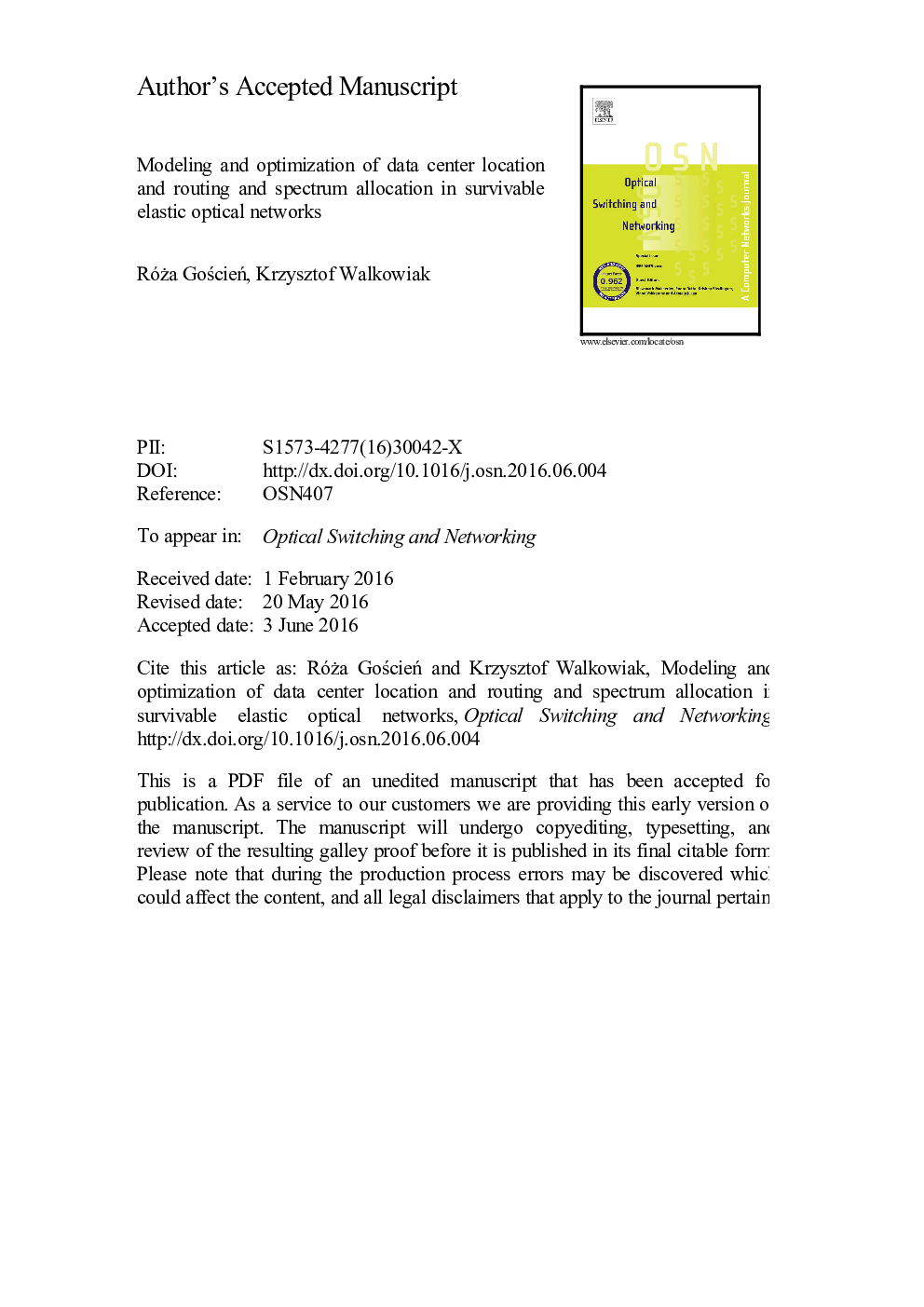| Article ID | Journal | Published Year | Pages | File Type |
|---|---|---|---|---|
| 4957217 | Optical Switching and Networking | 2017 | 45 Pages |
Abstract
In this paper, we focus on the problem of locating data centers (DCs) and routing traffic demands in survivable elastic optical network (EON). We consider and compare two different modeling and optimization approaches: joint optimization of both issues at the same time (problem DC-RSA) and decomposition method, which divides problem into two subsequent subproblems of DC location and demands routing with a given DC locations. For both approaches we formulate integer linear programming (ILP) models and propose heuristic algorithms to solve related problem instances. In case of the decomposition method, we propose to use topology-based (that follows directly from the network graph structure) and demographic-economical (characteristics of the cities that correspond to network nodes) data to define DC location policies. We define seven different DC location polices, which can be classified as topology-based, demographic-economical, and hybrid (use both groups of information). Next, we perform extensive numerical experiments on realistic network topologies, in order to evaluate efficiency of the proposed optimization methods and compare different optimization approaches in terms of the computational complexity, spectrum usage, and survivability provisioning in case of a random large-scale disaster. The results of our investigation show that the joint optimization problem (DC-RSA) is much more complex than the decomposition approach. However, the corresponding results bring better network performance according to the spectrum usage and provide good level of network survivability at the same time. Regarding different DC location policies applied with decomposition method, the investigation proves that DC location policy has a crucial influence on the network performance (in terms of the spectrum usage and survivability provisioning), especially when the number of available DCs is relatively small. According to the results, topology-based DC location policies significantly outperform demographic-economical methods in terms of both-spectrum usage and survivability provisioning.
Related Topics
Physical Sciences and Engineering
Computer Science
Computer Networks and Communications
Authors
Róża GoÅcieÅ, Krzysztof Walkowiak,
